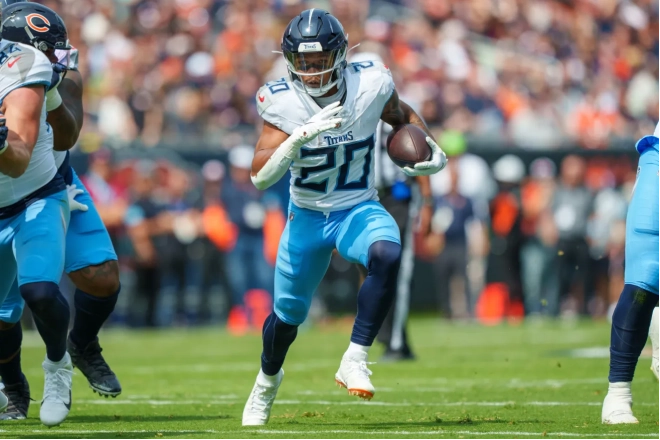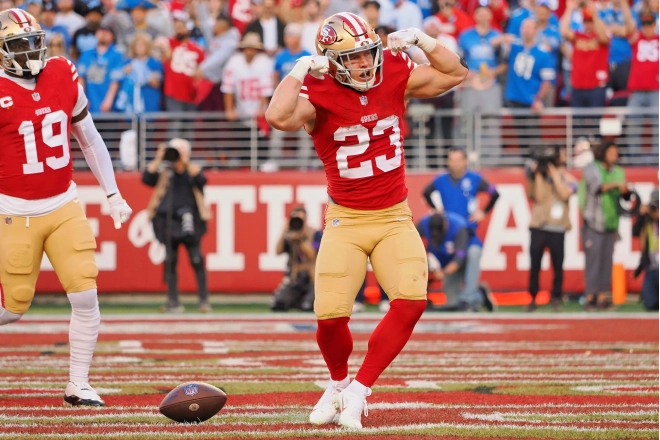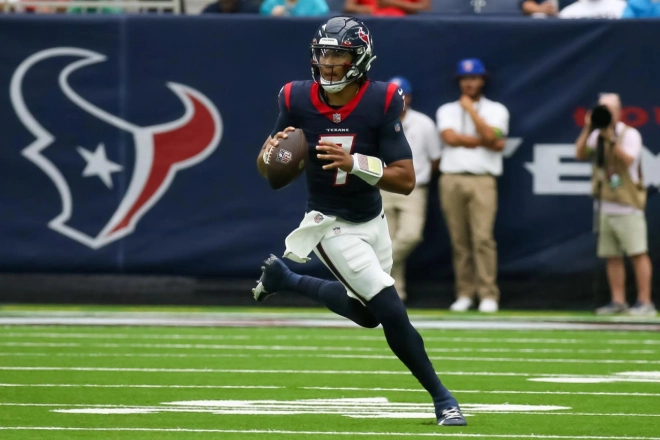The 2010’s decade saw the NFL move further away from its past identity as a gritty-thrifty run-first league towards a more flashy - luxury pass-first league. In this experimental passing era some teams have separated to greater offensive heights while others have remained grounded. Over the course of years 2010 to 2019 here are the most productive offenses of that decade:
Denver Broncos - 2013
- Total Yards: 7,317 (2nd out of 320 Franchises)
- Total Points: 606 (1st out of 320 Franchises)
- 40 Point Games: 6
These are ridiculous numbers when you stack this franchise against the rest of the decade. Quarterback Peyton Manning won the league MVP and threw for 5,477 yards and 55 touchdowns, both records. The wide receivers were a nightmare to match-up against: Demaryius Thomas, Eric Decker, Wes Walker and Julius Thomas each scored at least 10 receiving touchdowns.
Wes Walker and Eric Decker were route tree savants who consistently got open, even though their lack of speed hurt them with yards after catch. This was countered by Demaryius Thomas who was an unreal athlete at 6'3, 229 pounds, great speed and evasive after the catch ability. Julius Thomas a former college basketball player, would regularly “box out” defenders, using his mixed sport skill set to get open and make tough catches.
The offensive line was incredible in the passing game, only allowing 18 sacks and being able to match Manning’s tempo. The running game was not the focus of this team. Running back Knowshon Moreno was an effective weapon in both the run and passing game. Tight ends were used in the modern style as passing weapons rather than run blockers.
Kansas City Chiefs - 2018
- Total Yards: 6,810 (5th out of 320 Franchises)
- Total Points: 565 (2nd out of 320 Franchises)
- 40 Point Games: 5
Patrick Mahomes had a legendary season in just his second year in the NFL, winning an MVP in his first year as a starter, throwing for 5,097 yards, an NFL-leading 50 touchdowns and just 12 interceptions while completing 66 percent of his passes. This season established Travis Kelce and Tyreek Hill as one of the greatest perimeter weapon one-two punches in NFL history.
Tyreek Hill playmaker threat in the deep passing game is unrivalled; he is a threat to score on every down.
The offensive line was great holding back pressure to allow Mahomes time to scan the field and throw bombs. The run game spearheaded by an elusive Kareem Hunt was effective and attracted attention to open the field up for Kelce/Hill. Coach Andy Reid redefined the expectations of a tight end as a playmaker.
Green Bay Packers - 2011
- Total Yards: 6,810 (10th out of 320 Franchises)
- Total Points: 560 (3rd out of 320 Franchises)
- 40 Point Games: 6
In 2011, Aaron Rodgers led the Packers to a 15-1 record while taking the NFL by storm. An incredible 45-to-6 touchdown-to-interception ratio, a 68.3 completion percentage and 9.2 yards per attempt demonstrates Rodgers's commitment to efficiency and effective throwing.
The Green Bay Packers offensive line was sublime in the passing game to allow for all the deep routes to play out. The quarterback to wide receiver chemistry of Aaron Rodgers to Jordy Nelson is a historic playmaking connection. The Packer’s surrounded Aaron Rodgers with plenty of speed to take advantage of his unreal accuracy on deep field throws: Greg Jennings, James Jones, Randall Cobb, Donald Driver complimented by tight end Jermichael Finley is a hellacious perimeter.
The run game was a complete after-thought. Coach Mike McCarthy fully invested in his QB, offensive line and array of playmakers. The run game was based around two running backs Ryan Grant and James Starks who played the dual runner-pass catcher role. It was this lack of a power game that was the achilles heel of the offense.
New England Patriots - 2012
- Total Yards: 6,846 (4th out of 320 Franchises)
- Total Points: 557 (4th out of 320 Franchises)
- 40 Point Games: 5
Tom Brady ended the season with 4,827 passing yards, 34 touchdowns and just 8 interceptions. The Patriots offense was building on an impressive 2011 season in which the team made the Super Bowl. Bill Belichick as a defensive coach provided an excellent safety blanket for the offense.
This New England Patriots offense is different from other teams on this list by how well balanced the talent is spread out on offense; Tom Brady at QB, Wes Walker at WR, a young Rob Gronkowski at TE, and Stevan Ridley at RB, who gained over a 1,000 yard rushing.
This offense also carried depth at multiple offensive positions, flex playmakers such as Danny Woodhead and a young Julius Edelman would give every ounce in the few snaps they received. The offensive line operated well and played to Tom Brady’s tempo.
The achilles heel of this offense was the lack of an outright #1 receiver. Walker was a little too old, Gronk was a little too young and the running backs were effective but not MVP candidates. Tom Brady was the team’s best playmaker and he functions best when surrounded by fellow elite playmakers, e.g. 2007.
New Orleans Saints - 2011
- Total Yards: 7,474 (1st out of 320 Franchises)
- Total Points: 547 (6th out of 320 Franchises)
- 40 Point Games: 6
Drew Brees had 5,476 yards on an absurd 71.2 completion percentage, and 46 touchdowns against 14 interceptions in 2011. Brees won his second Offensive Player of the Year award. Coach Sean Payton's offense set the decade's highest offensive yardage total.
The efficiency of this offense in the passing game is all time historic. The secret behind such an elite passing game is the abundance of playmaker options made available to Drew Brees at all levels. The Saints offense of 2011 had the personnel to set-up almost any type of play.
Jimmy Graham was an early trailblazer of an outright tight end, and emerged as a #1 option in the passing game. Marques Colston who stood at 6 '5, but ran a 4.51 40 yard dash, was a rare mix of size and explosiveness. These were accompanied by a great complimentary list of playmakers: Lance Moore, Robert Meachem and Devery Henderson provided elite speed, scheme creativity and reliable #3rd and #4th options for Drew Brees.
The offensive line dominated on both offensive fronts; the pass protection was elite to allow Drew Brees the opportunity to scan the field and pick from his array of options. The run game was menacing with two groups of playmaker threats: Darren Sproles and Pierre Thomas playing a dual runner-pass catcher role to perfection while Mark Ingram provided power and grit through tackles. This unlocked a hellacious passing game coupled with a fearsome smoke and mirror run game supported by an outrageous offensive line performance.
Below is a chart of all teams in that decade so you can see how they compare:






